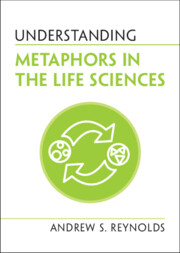Book contents
- Understanding Metaphors in the Life Sciences
- Series page
- Understanding Metaphors in the Life Sciences
- Copyright page
- Additional material
- Dedication
- Contents
- Foreword
- Preface
- Acknowledgements
- 1 Metaphors and Science
- 2 Background Metaphors
- 3 Genes and Genomes
- 4 Proteins
- 5 Cells
- 6 Evolution
- 7 Ecology
- 8 Biomedicine
- Concluding Remarks
- Summary of Common Misunderstandings
- References
- Index
4 - Proteins
Machines, Messengers, and Team Players
Published online by Cambridge University Press: 11 April 2022
- Understanding Metaphors in the Life Sciences
- Series page
- Understanding Metaphors in the Life Sciences
- Copyright page
- Additional material
- Dedication
- Contents
- Foreword
- Preface
- Acknowledgements
- 1 Metaphors and Science
- 2 Background Metaphors
- 3 Genes and Genomes
- 4 Proteins
- 5 Cells
- 6 Evolution
- 7 Ecology
- 8 Biomedicine
- Concluding Remarks
- Summary of Common Misunderstandings
- References
- Index
Summary
While genes are said to provide the instructions, blueprints, programs, or recipes for protein synthesis, proteins themselves (which play structural and functional roles in the physiological activities of the cell), are commonly described as machines, motors, pumps, receptors, switches, messengers, recruiters, and cooperators that work together to carry out all the functions required of a living cell. Scientists employ these anthropomorphic and technomorphic metaphors to help themselves understand what proteins do and how they do it. As with the language of molecular genetics, there is often healthy debate among molecular biologists about the strengths and weaknesses of these metaphors for protein structure and function.
- Type
- Chapter
- Information
- Understanding Metaphors in the Life Sciences , pp. 48 - 66Publisher: Cambridge University PressPrint publication year: 2022

